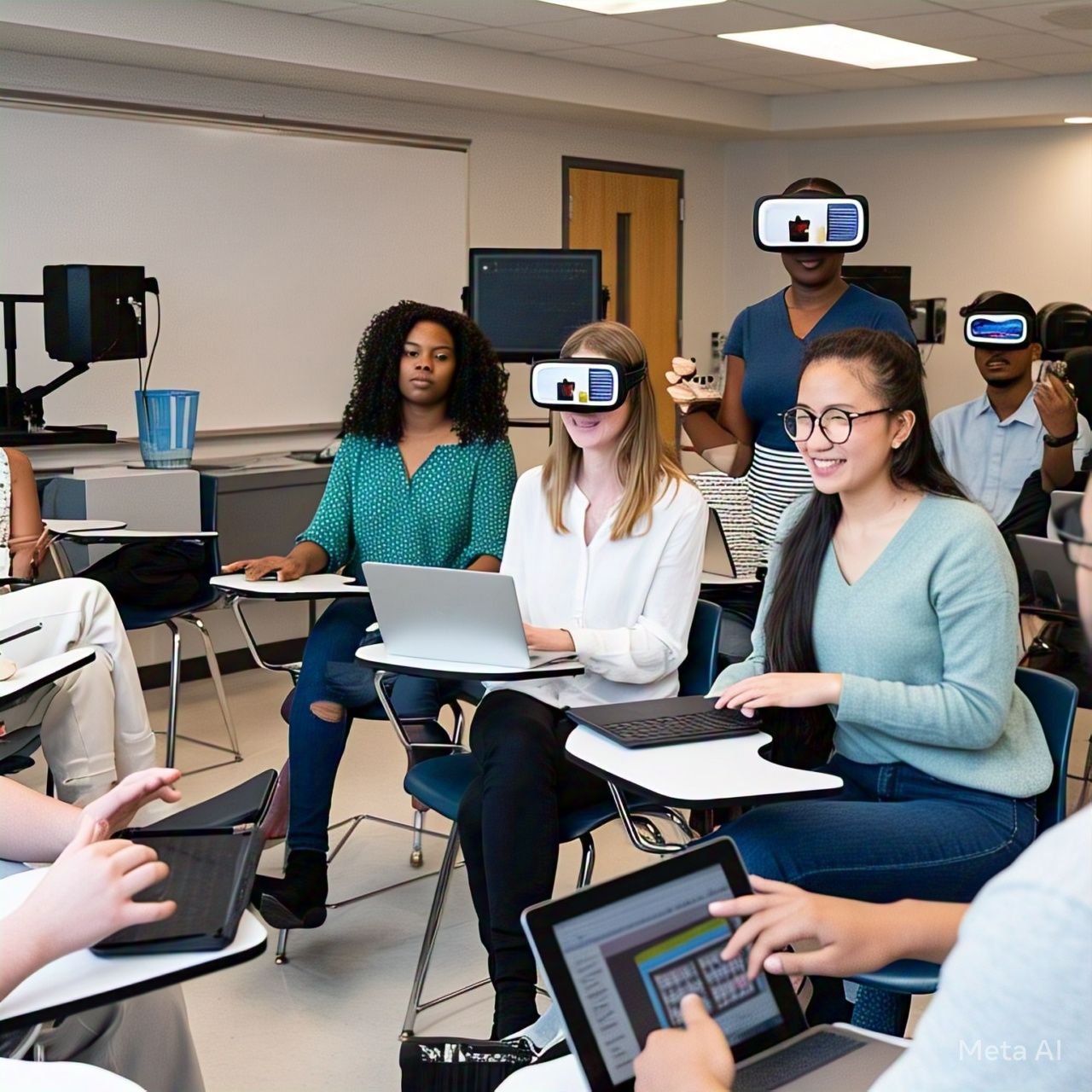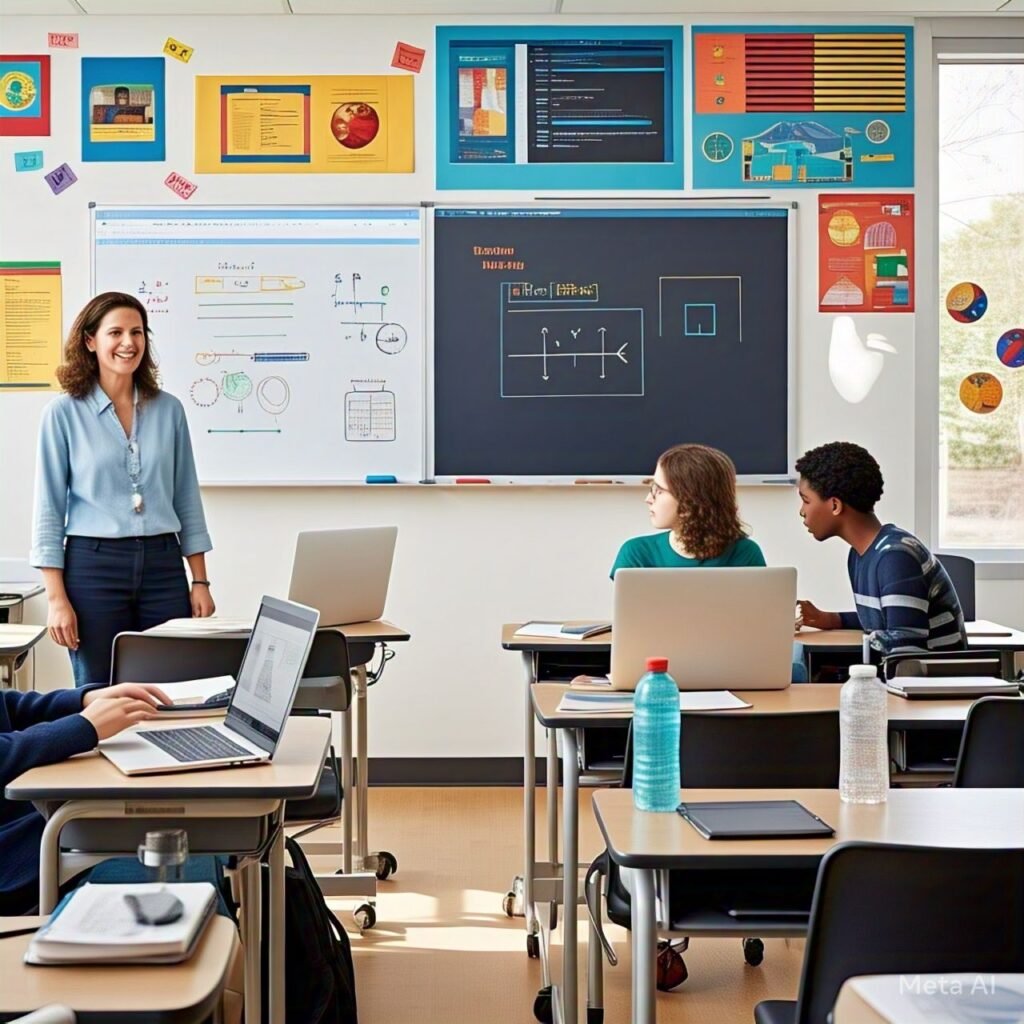The Impact of Technology on Education

Outline
H1: Introduction
- H2: The Evolution of Education
- H2: Role of Technology in Modern Learning
H1: Advantages of Technology in Education
- H2: Access to Information Anytime, Anywhere
- H2: Interactive and Engaging Learning
- H2: Personalized Learning Experience
- H2: Increased Collaboration and Communication
- H2: Remote and Distance Learning Opportunities
H1: Tools and Technologies Transforming Education
- H2: Learning Management Systems (LMS)
- H2: Artificial Intelligence and Machine Learning
- H2: Virtual Reality (VR) and Augmented Reality (AR)
- H2: Educational Apps and Gamification
- H2: Cloud Computing and Storage
H1: Challenges of Integrating Technology in Education
- H2: Digital Divide and Inequality
- H2: Screen Time and Health Concerns
- H2: Cybersecurity and Data Privacy
- H2: Teacher Training and Adaptation
H1: The Role of Teachers in a Tech-Driven Classroom
- H2: From Knowledge Givers to Learning Facilitators
- H2: Embracing EdTech for Better Outcomes
H1: Technology in Higher Education
- H2: Online Degrees and Certifications
- H2: Virtual Labs and Simulations
- H2: Research and Collaboration Tools
H1: The Future of Education with Technology
- H2: AI Tutors and Smart Classrooms
- H2: Blockchain for Academic Records
- H2: Lifelong Learning Through Tech
H1: Conclusion
H1: FAQs
- H2: How has technology improved education?
- H2: What are the disadvantages of technology in classrooms?
- H2: Can online learning replace traditional education?
- H2: What is the role of teachers in digital classrooms?
- H2: What is the future of technology in education?
Introduction
The Evolution of Education
Education has come a long way from chalkboards and textbooks. We’ve shifted from rote memorization to dynamic, student-centered learning—all thanks to technology. Whether you’re in a kindergarten classroom or a university lecture hall, tech has changed the game.
Role of Technology in Modern Learning
Technology is now embedded in every layer of education. From smartboards to AI-driven learning platforms, it’s making learning more accessible, personalized, and engaging than ever before.
Advantages of Technology in Education
Access to Information Anytime, Anywhere
Gone are the days of waiting for library hours. With smartphones and the internet, students can access millions of resources at any time, from anywhere in the world.
Interactive and Engaging Learning
Tech tools like animations, simulations, and gamified quizzes make learning fun and memorable. Interactive lessons help students stay focused and retain knowledge longer.
Personalized Learning Experience
Every student learns differently. AI-driven platforms can now adapt to each learner’s pace and style, offering tailored content that fits individual needs.
Increased Collaboration and Communication
Tools like Google Classroom, Zoom, and Slack allow teachers and students to collaborate easily—whether they’re across the hall or across the globe.
Remote and Distance Learning Opportunities
During the pandemic, tech proved vital in keeping education alive. Online classes, recorded lectures, and digital assessments made it possible to learn from home.

Tools and Technologies Transforming Education
Learning Management Systems (LMS)
Platforms like Moodle, Canvas, and Blackboard help manage courses, track progress, and distribute content—all in one place.
Artificial Intelligence and Machine Learning
AI helps assess performance, recommend learning paths, and even grade assignments. It’s like having a personal tutor in your device.
Virtual Reality (VR) and Augmented Reality (AR)
Imagine walking through ancient Rome or exploring the solar system—all from your classroom. VR and AR make it possible, offering immersive learning experiences.
Educational Apps and Gamification
Apps like Duolingo, Kahoot!, and Quizlet turn studying into a game. These tools boost engagement and make repetitive learning less boring.
Cloud Computing and Storage
Cloud tools like Google Drive and OneDrive allow students and teachers to store, share, and collaborate on documents in real time.
Challenges of Integrating Technology in Education
Digital Divide and Inequality
Not every student has access to high-speed internet or modern devices. This gap creates an uneven playing field in education.
Screen Time and Health Concerns
Too much screen time can lead to eye strain, sleep issues, and reduced physical activity. Balancing tech use is key.
Cybersecurity and Data Privacy
With more online tools come more data. Schools must protect student information from cyber threats and breaches.
Teacher Training and Adaptation
Many educators struggle to keep up with tech trends. Without proper training, even the best tools won’t be used effectively.
The Role of Teachers in a Tech-Driven Classroom
From Knowledge Givers to Learning Facilitators
In the digital age, teachers are no longer the sole source of knowledge. Instead, they guide students on how to find, evaluate, and apply information.
Embracing EdTech for Better Outcomes
Teachers who embrace technology can boost student engagement, improve outcomes, and make their lives easier through automation and analytics.
Technology in Higher Education
Online Degrees and Certifications
Universities now offer entire degrees online. This flexibility allows working professionals and remote learners to continue their education.
Virtual Labs and Simulations
STEM students can now conduct experiments virtually, gaining hands-on experience without needing expensive lab setups.
Research and Collaboration Tools
Digital libraries, citation tools, and collaborative platforms make research more efficient and accessible than ever before.
The Future of Education with Technology
AI Tutors and Smart Classrooms
Imagine a classroom where AI tracks student progress and adjusts lessons in real time. Smart classrooms are becoming a reality.
Blockchain for Academic Records
Blockchain tech offers secure, tamper-proof academic credentials—making it easier to verify degrees and prevent fraud.
Lifelong Learning Through Tech
Learning doesn’t stop after school. Platforms like Coursera and edX allow people to learn new skills throughout their lives.
Conclusion
Technology has reshaped education in ways we couldn’t have imagined a decade ago. From breaking barriers to making learning more engaging and inclusive, it’s clear that the future of education is digital. But it’s not just about gadgets and apps—it’s about how we use these tools to inspire, empower, and connect learners across the world.
FAQs
How has technology improved education?
It has made learning more accessible, interactive, and personalized. Students can now learn at their own pace, collaborate easily, and access vast resources online.
What are the disadvantages of technology in classrooms?
Too much screen time, digital distractions, and unequal access to devices and internet are common drawbacks that need careful management.
Can online learning replace traditional education?
Not entirely. While it offers flexibility and accessibility, the social interaction and hands-on experience of traditional education are still valuable.
What is the role of teachers in digital classrooms?
Teachers act as facilitators and mentors. They help students navigate tech tools, think critically, and apply what they learn in meaningful ways.
What is the future of technology in education?
Expect smarter classrooms, AI tutors, immersive VR experiences, and blockchain-based credentials. The goal is to make learning more efficient, inclusive, and lifelong.



